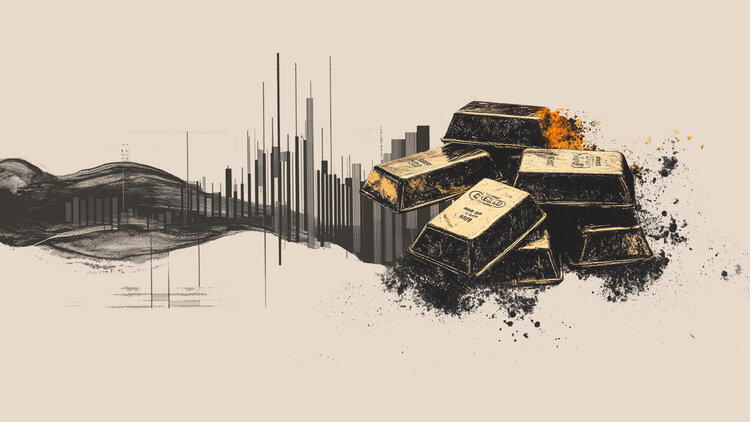Gold prices fell in United Arab Emirates on Wednesday, according to data compiled by FXStreet.
The price for Gold stood at 389.14 United Arab Emirates Dirhams (AED) per gram, down compared with the AED 389.83 it cost on Tuesday.
The price for Gold decreased to AED 4,538.90 per tola from AED 4,546.91 per tola a day earlier.
| Unit measure | Gold Price in AED |
|---|---|
| 1 Gram | 389.14 |
| 10 Grams | 3,891.48 |
| Tola | 4,538.90 |
| Troy Ounce | 12,103.73 |
Daily Digest Market Movers: Gold price is weighed down by reduced Fed rate cut bets
US President Donald Trump unnerved investors earlier this week by announcing higher tariff rates against a slew of major economies starting August 1. Moreover, Trump vowed to further escalate his trade wars on Tuesday, threatening US tariffs of up to 200% on foreign drugs and 50% on copper.
Investors now seem convinced that US tariffs will eventually feed through into higher prices and allow the Federal Reserve to stick to its wait-and-see approach. Moreover, the upbeat US jobs report for June eased concerns about a slowing US economy, and a July Fed rate cut is completely off the table.
This, in turn, pushed the yield on the benchmark 10-year US government bond and the US Dollar to a two-week high, making the non-yielding Gold price less attractive. The USD bulls, however, seem reluctant and opt to wait for more cues about the Fed’s rate cut path before placing fresh bets.
Meanwhile, investors are still pricing in the possibility of 50 basis points worth of Fed rate cuts by the end of this year, starting in October. Hence, the minutes of the last FOMC meeting and speeches by several Fed officials this week will be looked for more insights into the central bank’s policy outlook.
In the meantime, Trump’s rapidly shifting stance on trade policies and worries that steep US tariffs would negatively impact the global economy keep investors on edge. This might hold back traders from placing aggressive bearish bets around the safe-haven XAU/USD pair and limit deeper losses.
FXStreet calculates Gold prices in United Arab Emirates by adapting international prices (USD/AED) to the local currency and measurement units. Prices are updated daily based on the market rates taken at the time of publication. Prices are just for reference and local rates could diverge slightly.
Gold FAQs
Gold has played a key role in human’s history as it has been widely used as a store of value and medium of exchange. Currently, apart from its shine and usage for jewelry, the precious metal is widely seen as a safe-haven asset, meaning that it is considered a good investment during turbulent times. Gold is also widely seen as a hedge against inflation and against depreciating currencies as it doesn’t rely on any specific issuer or government.
Central banks are the biggest Gold holders. In their aim to support their currencies in turbulent times, central banks tend to diversify their reserves and buy Gold to improve the perceived strength of the economy and the currency. High Gold reserves can be a source of trust for a country’s solvency. Central banks added 1,136 tonnes of Gold worth around $70 billion to their reserves in 2022, according to data from the World Gold Council. This is the highest yearly purchase since records began. Central banks from emerging economies such as China, India and Turkey are quickly increasing their Gold reserves.
Gold has an inverse correlation with the US Dollar and US Treasuries, which are both major reserve and safe-haven assets. When the Dollar depreciates, Gold tends to rise, enabling investors and central banks to diversify their assets in turbulent times. Gold is also inversely correlated with risk assets. A rally in the stock market tends to weaken Gold price, while sell-offs in riskier markets tend to favor the precious metal.
The price can move due to a wide range of factors. Geopolitical instability or fears of a deep recession can quickly make Gold price escalate due to its safe-haven status. As a yield-less asset, Gold tends to rise with lower interest rates, while higher cost of money usually weighs down on the yellow metal. Still, most moves depend on how the US Dollar (USD) behaves as the asset is priced in dollars (XAU/USD). A strong Dollar tends to keep the price of Gold controlled, whereas a weaker Dollar is likely to push Gold prices up.
(An automation tool was used in creating this post.)

